Cinnamic acid
Modify Date: 2025-08-20 21:57:16
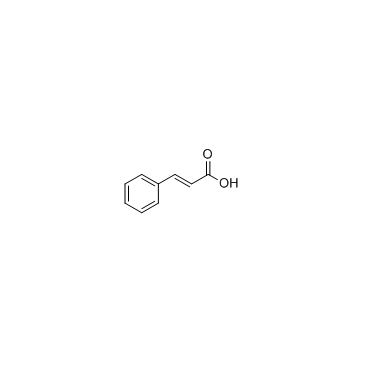
Cinnamic acid structure
|
Common Name | Cinnamic acid | ||
|---|---|---|---|---|
| CAS Number | 621-82-9 | Molecular Weight | 148.159 | |
| Density | 1.2±0.1 g/cm3 | Boiling Point | 265.0±0.0 °C at 760 mmHg | |
| Molecular Formula | C9H8O2 | Melting Point | 133ºC | |
| MSDS | N/A | Flash Point | 189.5±9.6 °C | |
Use of Cinnamic acidCinnamic acid has potential use in cancer intervention, with IC50s of 1-4.5 mM in glioblastoma, melanoma, prostate and lung carcinoma cells. |
| Name | cinnamic acid |
|---|---|
| Synonym | More Synonyms |
| Description | Cinnamic acid has potential use in cancer intervention, with IC50s of 1-4.5 mM in glioblastoma, melanoma, prostate and lung carcinoma cells. |
|---|---|
| Related Catalog | |
| Target |
Human Endogenous Metabolite |
| In Vitro | Treatment with Cinnamic acid (CINN) of various tumor cells of epithelial and neuroectodermal origin result in dose-dependent growth inhibition following a 3-day exposure. The inhibitory concentrations causing a 50% reduction in tumor-cell proliferation (IC50) are between 1.2 to 4.5 mM. It is also showed that 20 mM Cinnamic acid is needed to cause an IC50 in FS4 cells, i.e. 5 to 20 times more than for tumor cells. In addition to inhibiting tumor-cell proliferation, Cinnamic acid causes morphological changes consistent with melanocyte differentiation. Within 5 days of treatment with 5 mM Cinnamic acid, melanoma 1011 cells appear enlarged with a markedly increased cytoplasm-to-nuclear ratio and well organized cytoskeleton, developed long dendritic processes and became highly melanotic. The change in the capacity of Cinnamic acid -treated melanoma 1011, A375(M) and SKMEL28 cells to degrade and cross tissue barriers is assessed by an in vitro invasion assay using modified Boyden chambers with matrigel-coated filters. After 3 days of continuous treatment with Cinnamic acid, a dose-dependent loss of invasive capacity in 3 tested tumor lines is observed. Treatment with 5 mM Cinnamic acid results in 75-95% loss of invasiveness[1]. |
| Cell Assay | The cell lines used, established from human malignant tumors, are A549 (lung cancer); PC3(M), Du145, and LNCaP (prostate cancer); A172, U251 (glioblastoma); and SKMEL28, A375(M), 1011 (melanoma). Growth rates are determined by cell counting. Briefly, 5 X104 cells are plated in each well of a 24-well plate, allowed to attach overnight, and treated with compounds (e.g., Cinnamic acid: 2.5, 5, 10, 20, 30 mM) the following day. Cells are grown for 3 days at 37°C in the presence or absence of the drug, then detached with trypsin/EDTA and counted in a Coulter counter. Viability is determined by Trypan-blue exclusion assay[1]. |
| References |
| Density | 1.2±0.1 g/cm3 |
|---|---|
| Boiling Point | 265.0±0.0 °C at 760 mmHg |
| Melting Point | 133ºC |
| Molecular Formula | C9H8O2 |
| Molecular Weight | 148.159 |
| Flash Point | 189.5±9.6 °C |
| Exact Mass | 148.052429 |
| PSA | 37.30000 |
| LogP | 2.41 |
| Vapour Pressure | 0.0±0.5 mmHg at 25°C |
| Index of Refraction | 1.616 |
| Stability | Stable. Combustible. Incompatible with strong oxidizing agents. |
Synonym:Phenylacrylic acid; 3-Phenylacrylic acid; 3-Phenyl-2-propenoic acid Section 2 - COMPOSITION, INFORMATION ON INGREDIENTS
Risk Phrases: 36/38 Section 3 - HAZARDS IDENTIFICATION EMERGENCY OVERVIEW
Irritating to eyes and skin. Potential Health Effects Eye: Causes eye irritation. Skin: Causes skin irritation. Ingestion: Causes gastrointestinal irritation with nausea, vomiting and diarrhea. Inhalation: Causes respiratory tract irritation. Chronic: No information found. Section 4 - FIRST AID MEASURES Eyes: Immediately flush eyes with plenty of water for at least 15 minutes, occasionally lifting the upper and lower eyelids. Get medical aid immediately. Skin: Immediately flush skin with plenty of water for at least 15 minutes while removing contaminated clothing and shoes. Get medical aid if irritation develops or persists. Ingestion: If victim is conscious and alert, give 2-4 cupfuls of milk or water. Never give anything by mouth to an unconscious person. Get medical aid. Inhalation: Remove from exposure and move to fresh air immediately. If not breathing, give artificial respiration. If breathing is difficult, give oxygen. Get medical aid. Notes to Physician: Section 5 - FIRE FIGHTING MEASURES General Information: As in any fire, wear a self-contained breathing apparatus in pressure-demand, MSHA/NIOSH (approved or equivalent), and full protective gear. During a fire, irritating and highly toxic gases may be generated by thermal decomposition or combustion. Extinguishing Media: Use foam, dry chemical, or carbon dioxide. Section 6 - ACCIDENTAL RELEASE MEASURES General Information: Use proper personal protective equipment as indicated in Section 8. Spills/Leaks: Vacuum or sweep up material and place into a suitable disposal container. Reduce airborne dust and prevent scattering by moistening with water. Clean up spills immediately, observing precautions in the Protective Equipment section. Section 7 - HANDLING and STORAGE Handling: Wash thoroughly after handling. Wash hands before eating. Use with adequate ventilation. Avoid contact with skin and eyes. Avoid ingestion and inhalation. Storage: Store in a cool, dry place. Store in a tightly closed container. Section 8 - EXPOSURE CONTROLS, PERSONAL PROTECTION Engineering Controls: Use adequate ventilation to keep airborne concentrations low. Exposure Limits CAS# 621-82-9: Personal Protective Equipment Eyes: Wear appropriate protective eyeglasses or chemical safety goggles as described by OSHA's eye and face protection regulations in 29 CFR 1910.133 or European Standard EN166. Skin: Wear appropriate protective gloves to prevent skin exposure. Clothing: Wear appropriate protective clothing to prevent skin exposure. Respirators: Follow the OSHA respirator regulations found in 29 CFR 1910.134 or European Standard EN 149. Use a NIOSH/MSHA or European Standard EN 149 approved respirator if exposure limits are exceeded or if irritation or other symptoms are experienced. Section 9 - PHYSICAL AND CHEMICAL PROPERTIES Physical State: Solid Color: white Odor: Honey floral odor. pH: Not available. Vapor Pressure: Not available. Viscosity: Not available. Boiling Point: 300 deg C Freezing/Melting Point: 133 deg C Autoignition Temperature: Not applicable. Flash Point: 212 deg F ( 100.00 deg C) Explosion Limits, lower: Not available. Explosion Limits, upper: Not available. Decomposition Temperature: Not available. Solubility in water: Insoluble in water. Specific Gravity/Density: Not available. Molecular Formula: C9H8O2 Molecular Weight: 148.0548 Section 10 - STABILITY AND REACTIVITY Chemical Stability: Stable under normal temperatures and pressures. Conditions to Avoid: Incompatible materials. Incompatibilities with Other Materials: Strong oxidants. Hazardous Decomposition Products: Carbon monoxide, irritating and toxic fumes and gases, carbon dioxide. Hazardous Polymerization: Has not been reported. Section 11 - TOXICOLOGICAL INFORMATION RTECS#: CAS# 621-82-9: GD7800000 LD50/LC50: CAS# 621-82-9: Draize test, rabbit, skin: 500 mg/24H Mild; Oral, mouse: LD50 = 5 gm/kg; Oral, rat: LD50 = 2500 mg/kg. Carcinogenicity: Cinnamic Acid - Not listed by ACGIH, IARC, or NTP. Other: See actual entry in RTECS for complete information. Section 12 - ECOLOGICAL INFORMATION Section 13 - DISPOSAL CONSIDERATIONS Products which are considered hazardous for supply are classified as Special Waste and the disposal of such chemicals is covered by regulations which may vary according to location. Contact a specialist disposal company or the local waste regulator for advice. Empty containers must be decontaminated before returning for recycling. Section 14 - TRANSPORT INFORMATION IATA Not regulated as a hazardous material. IMO Not regulated as a hazardous material. RID/ADR Not regulated as a hazardous material. Section 15 - REGULATORY INFORMATION European/International Regulations European Labeling in Accordance with EC Directives Hazard Symbols: XI Risk Phrases: R 36/38 Irritating to eyes and skin. Safety Phrases: S 26 In case of contact with eyes, rinse immediately with plenty of water and seek medical advice. S 28 After contact with skin, wash immediately with... WGK (Water Danger/Protection) CAS# 621-82-9: 1 Canada CAS# 621-82-9 is listed on Canada's DSL List. CAS# 621-82-9 is not listed on Canada's Ingredient Disclosure List. US FEDERAL TSCA CAS# 621-82-9 is listed on the TSCA inventory. SECTION 16 - ADDITIONAL INFORMATION N/A |
CHEMICAL IDENTIFICATION
HEALTH HAZARD DATAACUTE TOXICITY DATA
|
| Precursor 9 | |
|---|---|
| DownStream 10 | |
| HS Code | 2916399090 |
|---|---|
| Summary | 2916399090 other aromatic monocarboxylic acids, their anhydrides, halides, peroxides, peroxyacids and their derivatives VAT:17.0% Tax rebate rate:9.0% Supervision conditions:none MFN tariff:6.5% General tariff:30.0% |
| (E)-3-Phenylprop-2-enoic acid |
| Propenoic acid, 3-phenyl-, (trans)- |
| Cinnamic acid |
| (2E)-3-Phenylacrylic acid |
| trans-Cinnamic Acid |
| EINECS 205-398-1 |
| MFCD00004369 |
| QV1U1R &&Trans or E Form |
| 2-Propenoic acid, 3-phenyl-, (2E)- |
| 4-09-00-02002 (Beilstein Handbook Reference) |
| trans-b-Carboxystyrene |
| 2-Propenoicacid, 3-phenyl- |
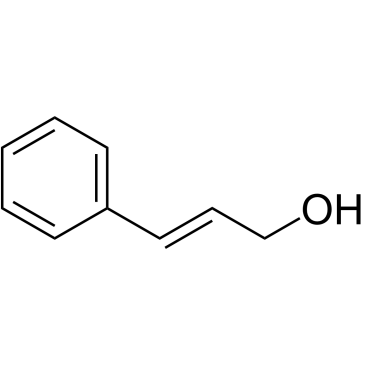 CAS#:104-54-1
CAS#:104-54-1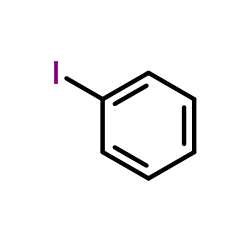 CAS#:591-50-4
CAS#:591-50-4 CAS#:79-10-7
CAS#:79-10-7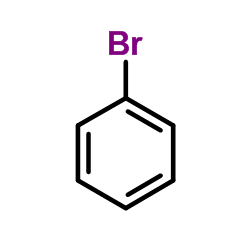 CAS#:108-86-1
CAS#:108-86-1 CAS#:124-38-9
CAS#:124-38-9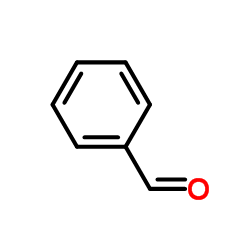 CAS#:100-52-7
CAS#:100-52-7 CAS#:64-19-7
CAS#:64-19-7 CAS#:104-55-2
CAS#:104-55-2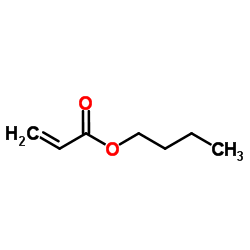 CAS#:141-32-2
CAS#:141-32-2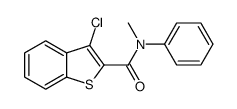 CAS#:105577-05-7
CAS#:105577-05-7 CAS#:10500-28-4
CAS#:10500-28-4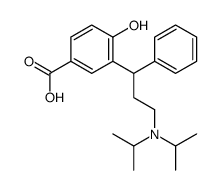 CAS#:1076199-77-3
CAS#:1076199-77-3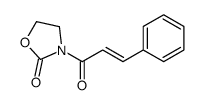 CAS#:109853-54-5
CAS#:109853-54-5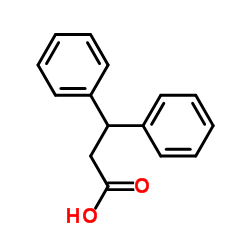 CAS#:606-83-7
CAS#:606-83-7 CAS#:16618-72-7
CAS#:16618-72-7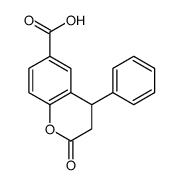 CAS#:356782-33-7
CAS#:356782-33-7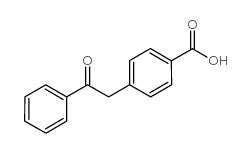 CAS#:346623-13-0
CAS#:346623-13-0 CAS#:3480-87-3
CAS#:3480-87-3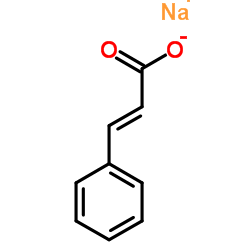 CAS#:538-42-1
CAS#:538-42-1
